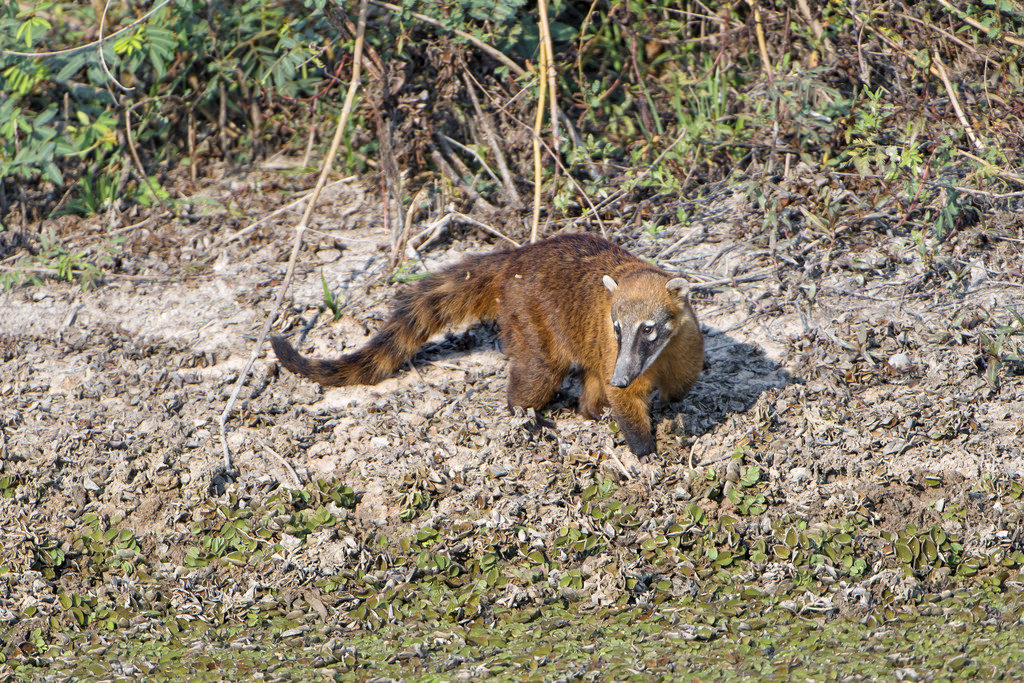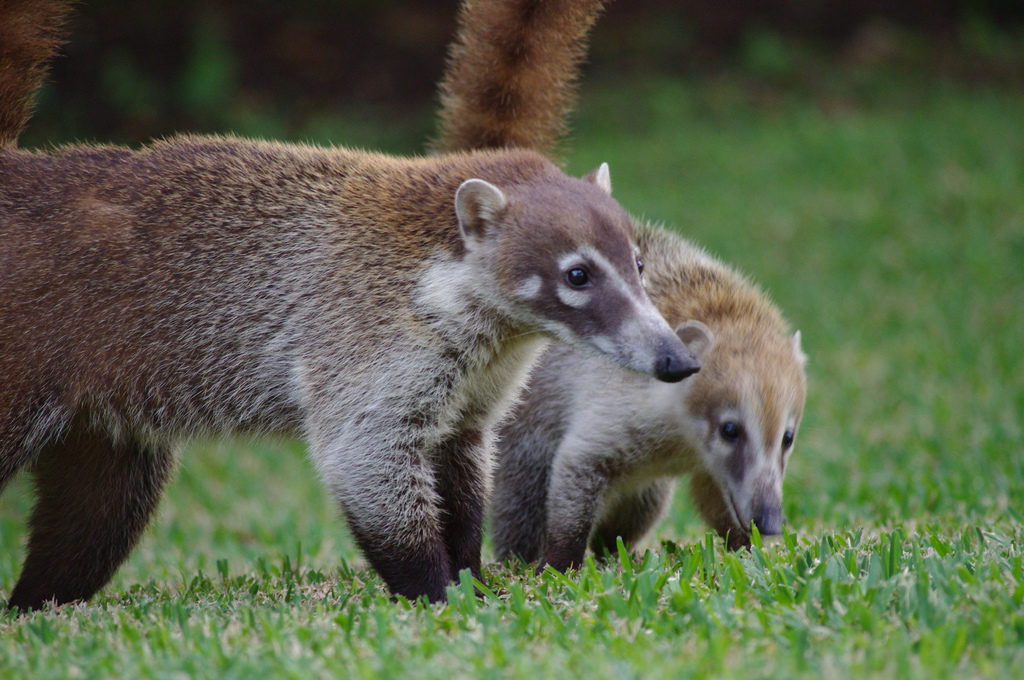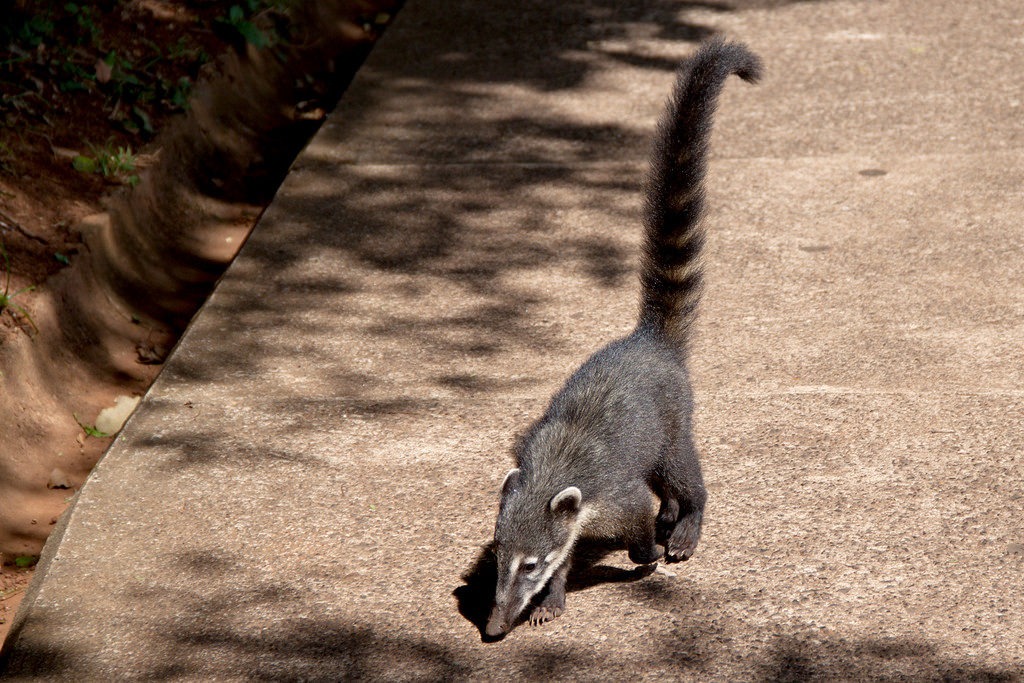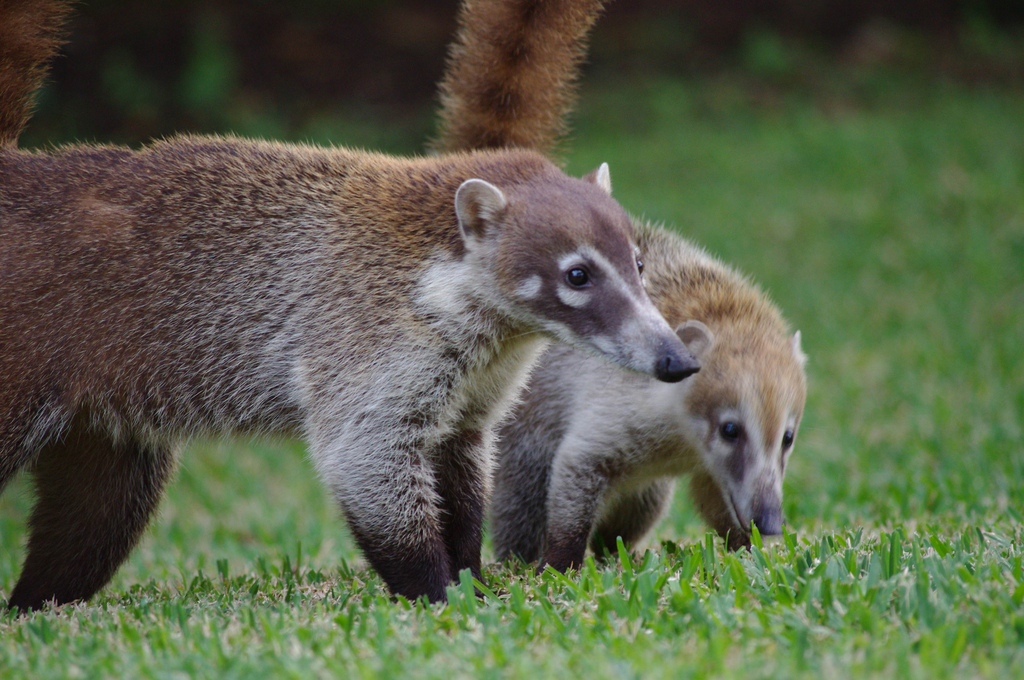Coatis are medium sized mammals that belong to the racoon family. There are 4 main species of coati that live in North, Central and South America. Take a look below for 24 more interesting and bizarre facts about coatis.
1. Coatis have thick fur that’s light brown or black on the back and lighter on the bottom. Their ears and face are covered with white markings. Their tals have light and dark rings.
2. They can reach 13 to 27 inches in length and they can weigh up to 6 to 18 pounds of weight. Male coatis are much larger than females.
3. They spend most of their life on the ground, where it looks for food, and a bit of time on trees, where it sleeps, mates and gives birth.
4. Due to their flexible ankles, they can rotate 180 degrees. They can also descended from the tree head first.
5. They have an elongated snout, strong jaws, small ears, slender bodies, bear like paws with non-retractable claws and a long bushy tail that lets them balance on trees.
6. They’re most active during the day, which means that they are diurnal animals.

7. They’re omnivores, which means that they eat both plants and other animals. Their diet consists mainly of seeds, fruits, nuts, insects, birds, eggs and small reptiles.
8. They have a sensitive, pig like snout that can be rotated 60 degrees in all directions. This allows them to push objects on the ground as they look for food.
9. Male coati are solitary, while females and their offspring live in groups called “bands,” that usually consist of 10 to 30 animals.
10. Coatis make chirping, snorting and grunting noises. They use these noises to express their mood and to alert other members of their group about dangers.
11. They become very aggressive when they feel threatened. They don’t hesitate to use their sharp teeth and long claws to protect themselves and other members of their group from potential predators.
12. Coatis are prey to jaguars, pumas, birds of prey, snakes and crocodiles.
13. Their mating seasons begins at the same time as the rainy season due to the plentiful food supply.
14. Female coatis are pregnant for 11 weeks and usually end up with between 2 to 7 offspring. the female leaves the group to give birth in a nest, tree or a rocky ledge.
15. When they’re 6 weeks old, young coatis rejoin the group with its mother.

16. Female coatis reach sexual maturity when they’re 2 years old, while male coatis reach sexual maturity when they’re 3 years old.
17. They usually survive for 7 to 8 years in the wild, and up to 15 years in captivity due to better living conditions.
18. Mountain coatis tend to be smaller than average and have shorter tails. They’re very rare to see in the wild and usually live in tropical forests.
19. Mountain coatis feed on insects, fruits and small vertebrates.
20. Ring tailed coatis are able to hold their long tails erect, with the tips curled. While they’re swinging from trees, they’re able to use their tails as a fifth limb. The tips of their tails curl around branches to provide support in more precarious locations.
21. Much like other species, ring tailed coatis live in bands of up to 20 female coatis and their young offspring. Adult males tend to live alone until breeding season starts.

22. White-nosed coati are found in a variety of forest types, from rainforest to drier, high altitude woodlands.
23. Their silver hairs are mixed with grey-brown fur to make a grizzled look. Their snout, which is long and flexible, has a white band near its tip.
24. In early spring, the most dominant male coati in the area is accepted in the female band. He then mates with each female in a tree, after which they chase him off.




